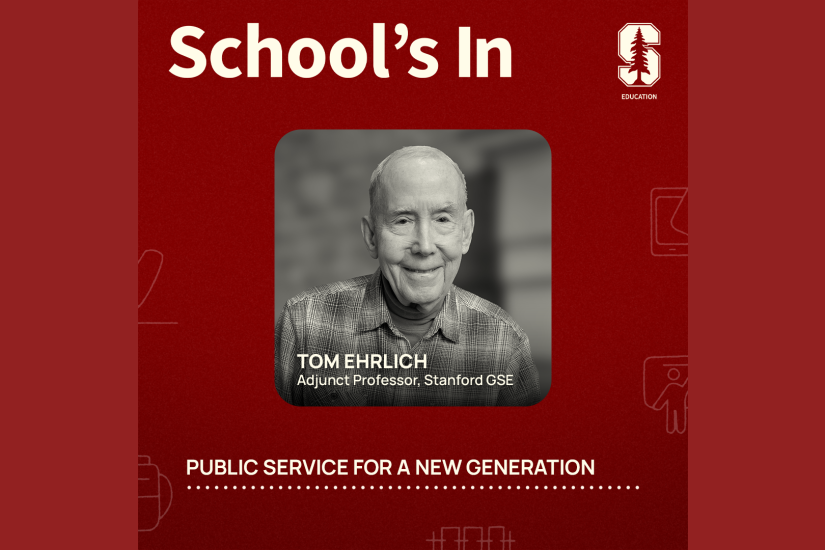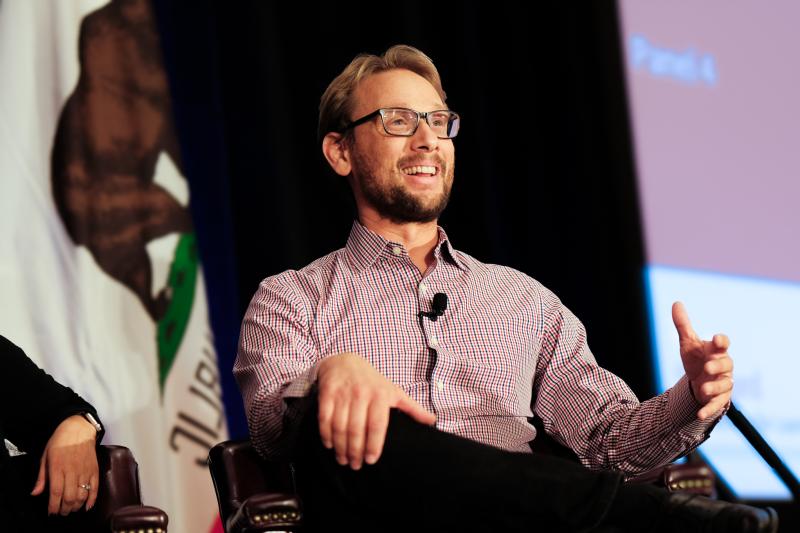
Stanford GSE pledges $5 million to partnership with San Francisco schools
Stanford University Graduate School of Education has committed to raise $5 million for a pair of new initiatives with the San Francisco Unified School District that will enable teachers and administrators to use research more effectively to meet students’ needs.
The new efforts are another step forward in a five-year-long partnership between the university and the district in which GSE research has led to significant gains: innovative early literacy methods, more engaging history curriculums, new ways of identifying students at risk of not graduating, and important insights on the effectiveness of English Language Learning programs, among other improvements.
“We are thrilled to be entering an even more ambitious phase in our partnership,” said Deborah Stipek, the I. James Quillen Dean of the Stanford Graduate School of Education. “This is going to help us deepen our understanding of the challenges that urban school districts face, while creating an example for researchers and school officials nationwide on how to work together to improve children’s lives.”
SFUSD Superintendent Richard Carranza agreed: “The partnership we have with Stanford is a game-changer for students and educators,” he said “The district has been sharing its top priorities with the Graduate School of Education since 2009, and together we developed a research agenda that yields evidence we can use in policy decisions and daily practice. It was tough for us to get data this relevant to our improvement efforts before we devised a new way to tap into Stanford’s research expertise.”
The partnership’s next stage features two efforts — the GSE Incentive Fund and the Action Research Team — that make it possible for Stanford faculty and students to collaborate with SFUSD personnel when conceiving their projects, insuring that the research will be even better aligned with district needs and respond more quickly to pressing questions facing San Francisco schools.
Research into action
In July, the GSE awarded six seed grants from the new Incentive Fund, and the investigations are now under way. A joint committee comprised of two SFUSD representatives and two GSE representatives reviewed over 15 competitive proposals, considering whether they were aligned with the district’s research agenda and met the GSE’s standards for rigor and generalizability to other urban districts, before making the selections. Another round will be awarded next July.
“The incentive fund certainly provides better district ‘plug in,’” said Professor of Education Claude Goldenberg, whose project with Stanford colleague Sean Reardon and Christina Wong, a special assistant to Superintendent Carranza, is identifying better ways to measure the quality of each of SFUSD’s three pathways for English Learners. “From the start, you’re hooked up with SFUSD colleagues who are very motivated to work on the project,” he said. “This is a true partnership.”
Goldenberg added that since getting his PhD three decades ago he has never seen such a fast-track for beginning a study in a school system. While it was competitive, the process was designed to get researchers into the schools more quickly. “In all respects — ease and transparency of the application, review, feedback/response, and funding processes —this is the best project-launch experience I’ve ever had,” he said.
The second new initiative — the Action Research Team — is tapping the talents of Stanford graduate students, while helping them to learn how to use their research skills on behalf of a school district. Four students were chosen in September for the program, and they are now working as research assistants in SFUSD’s Research, Planning, and Accountability Department.
The students are given quick-turnaround assignments and post their briefings on the SFUSD intranet so that district personnel can use them right away to inform their decisions. While the Incentive Fund supports complex yearlong projects, the findings of which will be made public, the work by the Action Research Team is intended to be immediately available and is primarily for internal use.
“Districts all over the country are realizing that they need this analytic expertise,” said Stipek. They are being called upon to develop new programs without evidence on the effectiveness of existing ones. They face complex financial and human resource challenges, and their students present different needs than in the past. They are awash in data but don't necessarily have the data-analytic expertise to use it to inform decision-making. Meanwhile education researchers are not typically trained to do research designed to meet districts' immediate needs.
The Action Research Team is ideal preparation for GSE doctoral students to meet district needs. “We’re going to prepare a new generation of researchers who know how to work effectively within districts and how to best support them,” said Stipek. “We are developing and fine-tuning a training model that other education schools and districts could adopt.”
Evidence of success
The benefits of SFUSD’s close relationship with Stanford can already be seen at SFUSD’s Mission High School, said Eric Guthertz, Mission High’s principal. With assistance from Stanford faculty, the school has adopted smaller learning communities and new instructional approaches. It launched efforts to overcome stereotype threat and to develop growth mindsets, both of which are grounded in pioneering work conducted at Stanford. And as a result of collaboration with Stanford researchers, Mission now has an early warning indicator system that enables administrators to identify the incoming freshmen most at risk of failing to graduate and to place them in a new mentoring program providing them with additional support.
“It’s a really powerful partnership,” Guthertz said. “It has fundamentally altered the ways many of our teachers teach — and the ways I lead.” Guthertz credited the Stanford Principal Fellows Program, in which he participated for three years, with helping him learn how to manage and guide the school.
The partnership was launched in 2009 with the support of the Silver Giving Foundation, which established a nonprofit organization, the California Education Partners, to promote collaborations (such as the one between Stanford and SFUSD) as a strategy toward solving key problems in education. The agreement between SFUSD and Stanford to deepen the partnership was reached earlier this year, and the GSE has set a goal of raising $1 million annually the next five years to support the Incentive Fund, the Action Research Team and other partnership activities.
The partnership currently has 29 research projects under way, including the six new ones supported by the Incentive Fund. Stanford researchers can still work through the partnership to coordinate studies with SFUSD and get outside funding for programs, as they have done in previous years.
The partnership also continues to include the professional development services that Stanford has provided to the district in the past. To date, hundreds of SFUSD teachers have attended summer workshops to learn the latest effective teaching practices, and more than half of the district’s high school principals, including Mission High’s Guthertz, have gone through the Stanford Principal Fellows Program. In addition, many of the teaching candidates in the Stanford Teaching Education Program do their clinical training in SFUSD classrooms and go on to become teachers in the district.
“The partnership’s successes can be duplicated by others,” said Carranza. “The challenges we face in San Francisco are common in many districts, so the solutions we implement here have the potential to benefit school systems nationwide.”
Work through the partnership has yielded 85 articles, reports and briefs, and the findings have changed education in San Francisco and beyond. Research in five San Francisco high schools, for instance, showed that students enrolled in classes using Stanford History Education Group lessons gained significantly more in historical thinking, factual knowledge and reading comprehension than students whose teachers did not use the curriculum; the program has now spread not only throughout SFUSD but also to districts nationwide, most recently Los Angeles, the nation’s second largest public school district.
Two other studies on the effectiveness of different programs for students who are learning English as a second language revealed that those placed in English-immersion classes did not do as well over the long-run as those in dual-language programs. The research has prompted SFUSD to review its approach to English Language Learning programs and informed California policy makers as they re-examine the state’s approach to bilingual education.
“Stanford professors and students are doing research that isn’t just sitting on a shelf in scholarly journals,” said Stipek. “Because it’s deeply integrated with the district’s concerns, we know that our research is immediately relevant and applicable. Because of our partnership, we also know that SFUSD is going to put these findings to use.”
If you are interested in supporting the GSE's partnership with the San Francisco Unified School District, please contact Heather Trippel at 650.724.3641 or htrippel@stanford.edu(link sends e-mail).



